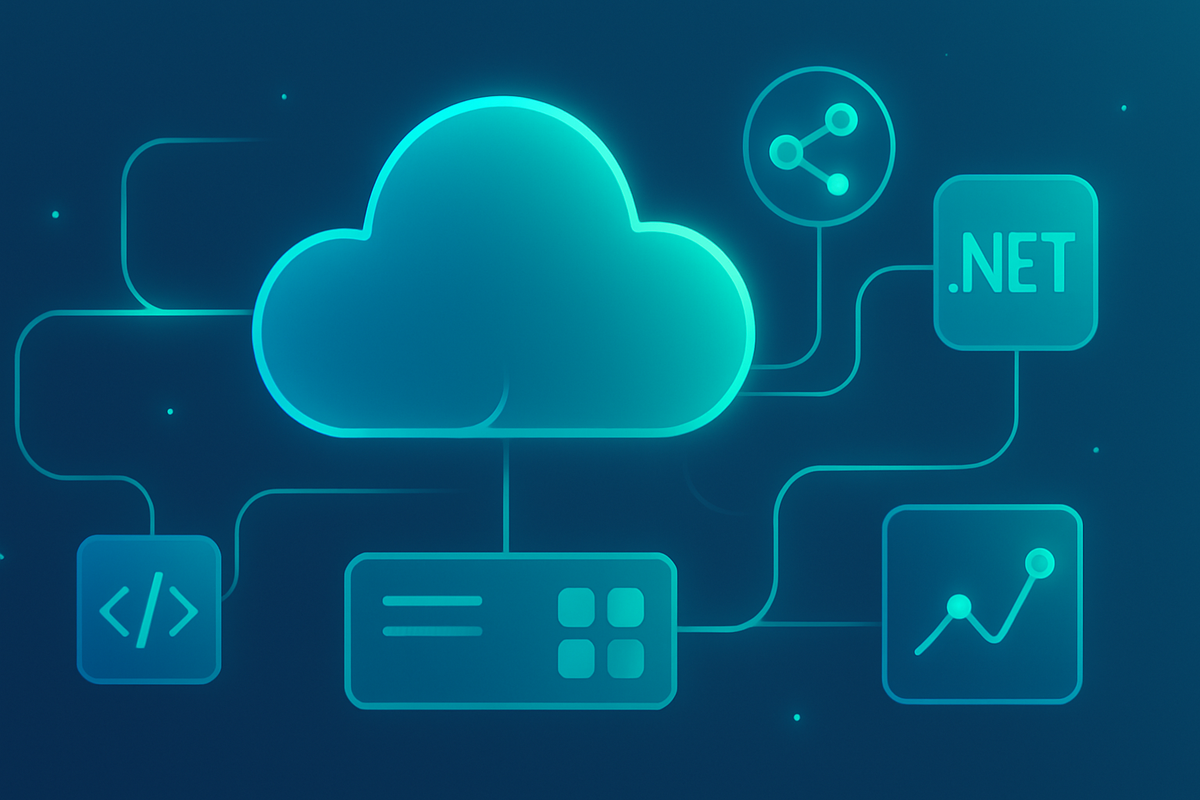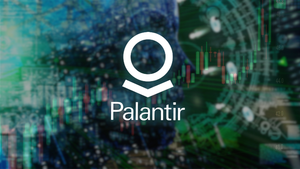
The landscape of cloud-native application development is undergoing a significant transformation, with Microsoft (NASDAQ: MSFT) leading the charge through its latest innovations. As of October 2025, the tech giant is setting new benchmarks with the advancements in .NET Aspire 9.5 and the imminent stable release of .NET 10, which introduces enhanced support for file-based applications. These developments are poised to dramatically simplify the creation, deployment, and management of distributed applications, offering developers unparalleled efficiency and agility in the complex cloud environment.
This strategic push aims to address the inherent complexities of building modern, scalable, and observable cloud-native solutions. By providing an opinionated and integrated stack, Microsoft is not only streamlining the developer experience but also accelerating the adoption of cloud-first architectures across various industries. The synergy between .NET Aspire's orchestration capabilities and .NET 10's simplified deployment models promises to reshape how enterprises approach their digital transformation journeys, potentially unlocking new levels of productivity and innovation.
Unpacking the Innovations: .NET Aspire 9.5 and .NET 10's File-Based Revolution
At the heart of Microsoft's cloud-native strategy lies .NET Aspire, a comprehensive framework designed to abstract away the intricate details of distributed application development. The recently announced .NET Aspire 9.5, building on the generally available Aspire 9.4 from August 2025, represents a significant leap forward. Aspire’s core strength lies in its Application Orchestration (AppHost), a code-first model that allows developers to define their application's services, dependencies, and configurations directly within C# code, eliminating cumbersome configuration files. This simplifies local development, service discovery, and environment variable management, providing a unified view of the application's topology. Furthermore, Aspire 9.5 expands its rich integration ecosystem with NuGet packages for popular services like Redis, PostgreSQL, and Azure Cosmos DB, standardizing connection, authentication, telemetry, and health checks. Its built-in observability features, including distributed tracing, metrics, structured logging, and the intuitive .NET Aspire Dashboard, offer real-time insights crucial for debugging and monitoring complex systems.
A standout feature in Aspire 9.5 is the experimental support for a single-file AppHost, a direct precursor to the broader "file-based application" concept gaining traction with .NET 10. This innovation allows for defining an Aspire AppHost without a traditional project file, significantly reducing boilerplate and simplifying the management of smaller applications or prototypes. This aligns perfectly with the overarching goal of .NET 10, which is scheduled for a Long-Term Support (LTS) stable release in November 2025, following its Release Candidate 1 (RC1) availability in September 2025. .NET 10’s enhanced support for file-based applications builds upon the existing single-file deployment capability, bundling all application-dependent files, and optionally the .NET runtime, into a single executable. When combined with Native AOT (Ahead-of-Time compilation), these applications boast a smaller footprint, faster startup times, and reduced memory consumption, critical attributes for efficient cloud-native deployments.
These developments are not just incremental updates; they represent a concerted effort by Microsoft to cement .NET's position as a premier platform for cloud-native development. Key players involved are primarily Microsoft's engineering teams, with significant contributions from the broader .NET open-source community. The initial industry reaction has been overwhelmingly positive, with developers praising the streamlined workflow and the promise of reduced operational overhead. The emphasis on developer experience, combined with robust tooling and performance enhancements, signals a strong commitment from Microsoft to empower its ecosystem for the demands of the modern cloud. The expanded AI integrations in Aspire 9.5, including a new Generative AI Visualizer and enhanced support for GitHub Models and Azure AI Foundry, further underscore Microsoft's vision for AI-infused cloud-native applications.
Market Implications: Winners and Challengers in the Cloud-Native Race
The advancements in .NET Aspire and .NET 10 are poised to create clear winners in the financial markets, with Microsoft (NASDAQ: MSFT) itself at the forefront. By providing a compelling, integrated, and performant stack for cloud-native development, Microsoft strengthens the appeal of its Azure cloud platform, encouraging more enterprises to build and deploy their applications within its ecosystem. Increased adoption of .NET Aspire and .NET 10 will likely translate into greater consumption of Azure services like Azure Kubernetes Service (AKS), Azure Container Apps, Azure Cosmos DB, and other managed services that seamlessly integrate with Aspire. This strategic alignment ensures that Microsoft's software development tools directly drive revenue for its cloud infrastructure, reinforcing its competitive position against rivals like Amazon Web Services (AWS) (NASDAQ: AMZN) and Google Cloud Platform (GCP) (NASDAQ: GOOGL).
Beyond Microsoft, companies heavily invested in the .NET ecosystem stand to gain significantly. Independent Software Vendors (ISVs) that offer developer tools, monitoring solutions, or complementary services for .NET applications will find a fertile ground for innovation and increased demand for their offerings. Consulting firms specializing in cloud migration and modern application development, particularly those with strong .NET practices, will see a surge in opportunities as enterprises seek to leverage these new capabilities. Furthermore, any public company that chooses to adopt .NET Aspire and .NET 10 for their internal cloud-native applications could realize substantial cost savings through improved developer productivity, faster time-to-market, and optimized resource utilization, ultimately boosting their operational efficiency and competitive edge.
Conversely, companies that fail to adapt to these evolving cloud-native paradigms, or those with deeply entrenched legacy systems built on older, less efficient technologies, might find themselves at a disadvantage. While not necessarily "losers," they may face increased pressure to modernize their tech stacks to keep pace with competitors enjoying the benefits of streamlined development and deployment. Development platforms or frameworks that do not offer similar levels of integration, observability, and simplified deployment for distributed applications may also face increased competition from the enhanced .NET ecosystem. However, the open-source nature of .NET means that many of these advancements can inspire similar innovations across other technology stacks, fostering a healthy, competitive environment for cloud-native development as a whole.
Broader Horizons: Reshaping the Cloud-Native Landscape
The introduction of .NET Aspire 9.5 and the capabilities of .NET 10 with file-based applications extend far beyond incremental updates; they represent a pivotal moment in the broader evolution of cloud-native development. This move by Microsoft (NASDAQ: MSFT) aligns perfectly with the industry's increasing demand for simplification and developer productivity in the face of ever-growing architectural complexity. The trend towards opinionated frameworks that abstract away infrastructure concerns, exemplified by Aspire, is a direct response to the "cognitive load" developers often experience when building microservices-based applications. It mirrors the success seen in other ecosystems, such as Spring Boot in the Java world, which similarly streamlined enterprise Java development for the cloud. This emphasis on developer experience and out-of-the-box observability is becoming a non-negotiable for modern application platforms.
The ripple effects of these developments are likely to be felt across the entire cloud-native ecosystem. Competitors in the application development platform space, including those supporting Java, Node.js, Go, and Python, will be compelled to accelerate their own efforts to simplify cloud-native development, enhance tooling, and improve deployment efficiencies. This competitive pressure will ultimately benefit developers across all ecosystems. Cloud providers, beyond Azure, will also need to ensure seamless integration and optimized support for these new .NET capabilities, as enterprises increasingly demand portable and efficient deployment options. The emphasis on Native AOT compilation and smaller single-file executables in .NET 10 also feeds into the broader industry trend of "green coding" and sustainable software development, where reduced resource consumption translates to lower energy usage and a smaller carbon footprint for data centers.
While direct regulatory or policy implications are minimal, the increased efficiency and simplified deployment could indirectly impact compliance and security postures. Easier management of application dependencies and consistent deployment patterns can lead to more secure and auditable software supply chains. Historically, shifts towards simpler development models have always accelerated adoption and innovation. The current trajectory for .NET, particularly with its renewed focus on cloud-native excellence, is reminiscent of periods where platforms successfully re-invented themselves to meet the demands of a new computing paradigm, such as the transition from monolithic architectures to service-oriented ones, and now to fully distributed cloud-native systems. This strategic investment positions .NET as a modern, competitive, and highly relevant choice for the next generation of enterprise applications.
The Road Ahead: Navigating Cloud-Native's Next Chapter
In the short term, the market will likely witness a rapid uptake of .NET Aspire 9.5 and the Release Candidate 1 of .NET 10, as developers and enterprises begin to experiment and integrate these new capabilities into their existing and new projects. The stable release of .NET 10 in November 2025 will be a critical milestone, solidifying the platform's long-term support and encouraging broader adoption. We can expect a flurry of community contributions, third-party tool integrations, and educational resources emerging to support these technologies. Early adopters will provide valuable feedback, shaping future iterations of Aspire and .NET, particularly concerning the experimental features like the single-file AppHost and further Native AOT optimizations. Companies will need to evaluate their existing cloud-native strategies and consider how these advancements can streamline their development pipelines and reduce operational costs.
Looking further ahead, the long-term possibilities are immense. The simplified development and deployment models offered by .NET Aspire and .NET 10 could accelerate the migration of monolithic applications to cloud-native architectures, even for organizations that previously found the transition too complex or costly. This could lead to a broader democratization of cloud-native development, enabling more developers to build sophisticated distributed systems. Strategic pivots will be required for businesses to fully capitalize on these efficiencies, potentially involving re-skilling teams or re-evaluating existing technology partnerships. The market opportunities that may emerge include new specialized services for Aspire deployments, enhanced tooling for observing and managing Aspire-orchestrated applications, and innovative solutions built on the highly efficient .NET 10 runtime.
Potential scenarios include a significant increase in .NET's market share in cloud-native development, challenging traditional leaders like Java and Node.js. The continuous integration of AI capabilities, as seen in Aspire 9.5, also points to a future where AI-powered development tools become standard, further enhancing developer productivity. Investors should watch for increased adoption rates of .NET Aspire and .NET 10 within enterprise environments, particularly those with substantial Microsoft (NASDAQ: MSFT) technology investments. The success of these initiatives will be reflected in Microsoft's Azure revenue growth and the overall health of the .NET developer ecosystem, making it a key indicator for the coming months.
Conclusion: A New Era for .NET in the Cloud
The latest developments surrounding Microsoft (NASDAQ: MSFT) .NET Aspire 9.5 and the impending stable release of .NET 10 mark a significant turning point for cloud-native application development. By offering an opinionated, integrated, and highly performant stack, Microsoft is effectively addressing the core complexities associated with building and operating distributed systems in the cloud. The synergy between Aspire's robust orchestration capabilities and .NET 10's simplified, file-based deployment models, especially with Native AOT, promises to usher in an era of unprecedented developer productivity and operational efficiency. This strategic evolution positions .NET as a highly competitive and attractive platform for enterprises seeking to accelerate their digital transformation and harness the full potential of cloud computing.
Moving forward, the market will undoubtedly benefit from this renewed focus on developer experience and cloud-native optimization. Companies that embrace these technologies are likely to gain a competitive edge through faster time-to-market, reduced development costs, and more resilient applications. Investors should pay close attention to the adoption metrics of .NET Aspire and .NET 10, as widespread acceptance will directly impact Microsoft's cloud revenue and the broader technology sector. The ongoing innovation in areas like AI integration and simplified deployment pipelines suggests a vibrant future for the .NET ecosystem.
Ultimately, the significance of these releases lies in their potential to democratize cloud-native development, making it accessible and manageable for a wider range of organizations and developers. This continuous evolution underscores Microsoft's commitment to fostering a modern, efficient, and powerful platform for the next generation of software. The coming months will be crucial in observing how these innovations translate into real-world business value and reshape the competitive dynamics of the cloud-native landscape.
This content is intended for informational purposes only and is not financial advice







